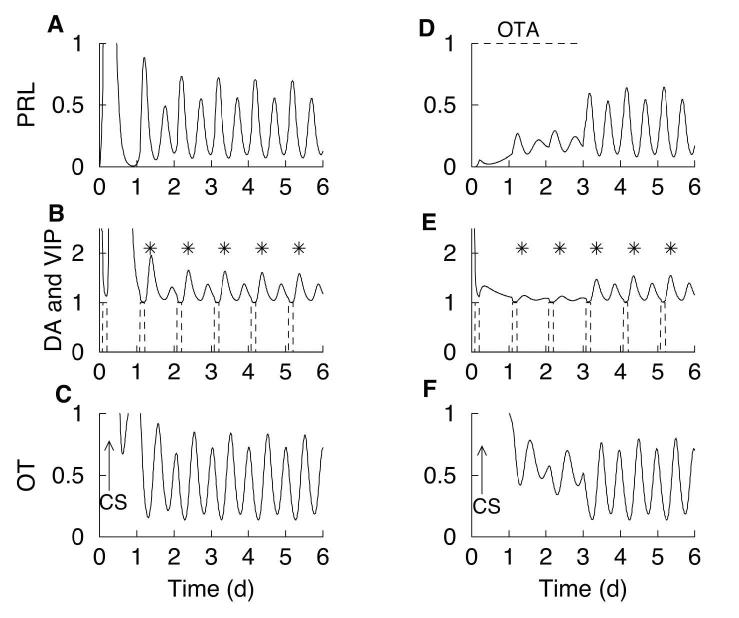Figure 2.
Model simulation. (A) Cervical stimulation on day 0 induces a circadian PRL rhythm. (B) DAergic neuronal activity peaks at noon (asterisks) and is out of phase with the PRL surges. VIP surges (dashed) occur every morning for 3 h and have an inhibitory action on DAergic neurons. The DAergic neuronal activity time course has been translated upward by one unit for clarity. (C) Cervical stimulation results in a surge in OT that triggers PRL surges. Cervical stimulation also activates OTergic neurons in the paraventricular nucleus, which provide stimulatory drive to the lactotrophs. The lactotrophs feedback onto and inhibit the OTergic neurons, producing an OT rhythm. (D-F) Same variables, but with an OT antagonist present through day 3 (simulated by setting ν o = 0 ). Once the OT antagonist is removed, DAergic neurons interact with lactotrophs to produce a circadian rhythm in PRL and DA, with DAergic neuronal activity peaking at noon (asterisks).

